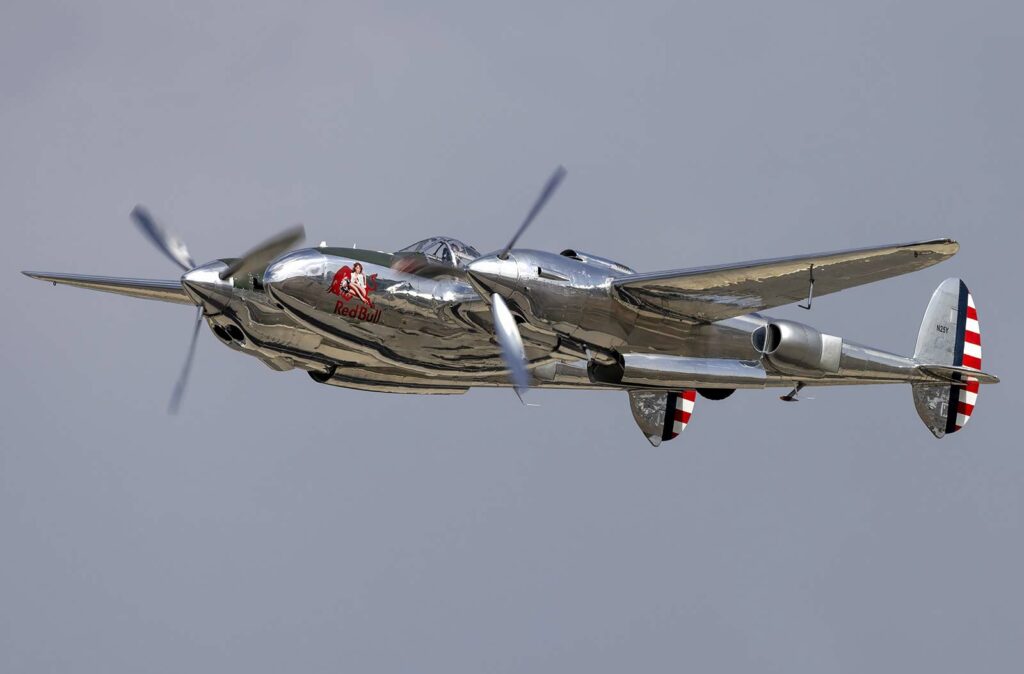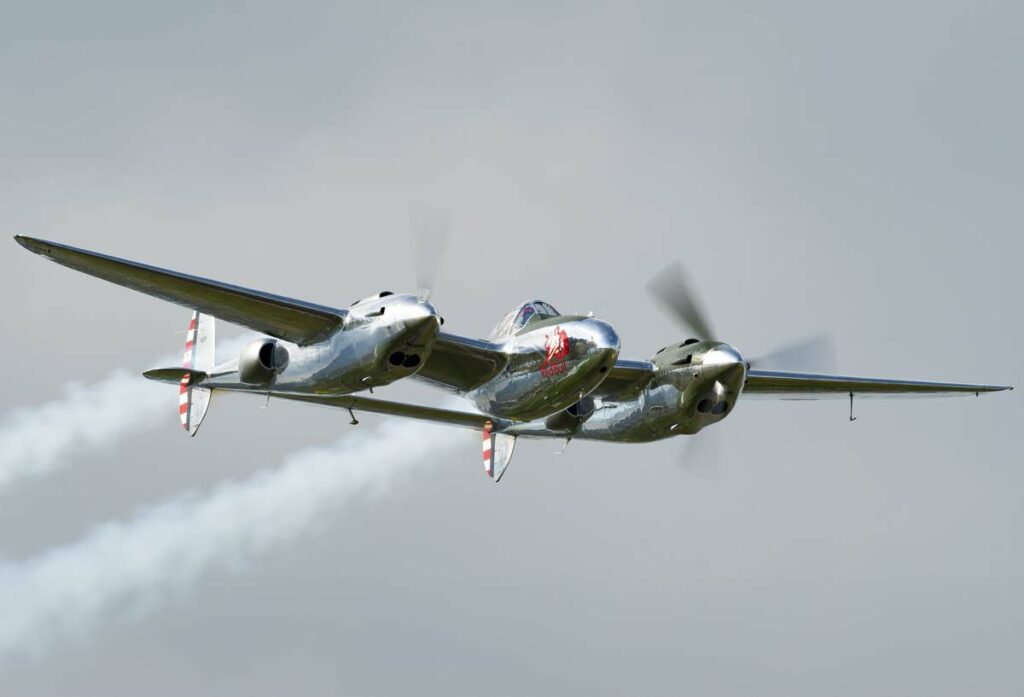The Lockheed P-38 Lightning, a distinctive WWII twin-engine, twin-boom fighter, known for its versatility, speed, and heavy armament.
This article delves into the Lockheed P-38 Lightning, a pivotal American fighter aircraft of World War II. It covers the historical context of its development, design attributes, performance capabilities, and military usage. The history section discusses the strategic needs leading to its creation, its first flight, and development objectives. The design segment addresses its unique twin-boom structure and technical specifications. Performance analysis compares the P-38 with its counterparts, highlighting its strengths and limitations in various combat scenarios. The military use section examines its role in different theaters of war, operational history, and its legacy, providing a comprehensive view of this iconic aircraft.
The Lockheed P-38 Lightning is one of the most recognizable fighter aircraft of World War II. Renowned for its distinctive twin-boom design and versatility, it served in various roles, including air superiority missions, bomber escort, and reconnaissance.

History of the Development of the Lockheed P-38 Lightning
During the late 1930s, as global tensions rose, the United States Army Air Corps (USAAC) sought a high-altitude interceptor with exceptional performance. The Lockheed Corporation, under the guidance of chief designer Clarence “Kelly” Johnson, responded with the P-38 Lightning.
The development program began in response to a 1937 USAAC requirement. The primary objective was to create a fighter capable of unprecedented speed, altitude, and range, addressing the need for an effective bomber escort and air superiority fighter. The program was characterized by innovative engineering, pushing the boundaries of existing technology.
The P-38 first took to the skies on January 27, 1939. Its development reflected the rapidly evolving technology and strategies of aerial warfare, marking a significant transition from the peacetime aviation industry of the 1930s to the war-focused production of the 1940s.
Design of the Lockheed P-38 Lightning
The Lockheed P-38 Lightning’s most striking feature was its twin-boom design, housing two Allison V-1710 engines. This unique configuration allowed for a central nacelle containing the cockpit and armament, resulting in a stable gun platform and excellent pilot visibility.
The aircraft measured 37 feet 10 inches (11.53 meters) in length, with a wingspan of 52 feet (15.85 meters). It had an empty weight of 12,800 pounds (5,806 kilograms) and a loaded weight of 17,500 pounds (7,938 kilograms). This design effectively balanced speed and maneuverability with firepower.
The twin-boom design offered several advantages. It provided room for a powerful armament setup without compromising aerodynamics, allowed for larger, more efficient engines, and contributed to the aircraft’s overall stability. However, the P-38’s size and complexity made it more challenging to produce and maintain compared to single-engine fighters.
Performance of the Lockheed P-38 Lightning
The P-38 was powered by two Allison V-1710 engines, each generating up to 1,600 horsepower (1,193 kW). This configuration enabled a top speed of about 414 mph (666 km/h) and a climb rate of 4,750 feet per minute (1,448 m/min). The aircraft’s service ceiling reached approximately 44,000 feet (13,411 meters), with a range of 1,300 miles (2,092 kilometers) on internal fuel.
Compared to contemporaries like the P-51 Mustang and the F4U Corsair, the P-38 was competitive in speed and altitude but was generally less agile at lower altitudes. Its twin-engine design provided added reliability, especially over long-range missions over the Pacific.

Military Use and Combat of the Lockheed P-38 Lightning
The P-38 was heavily armed with a 20 mm cannon and four .50 caliber machine guns in the nose, making it a formidable air-to-air combatant and an effective ground-attack aircraft. It saw extensive service in various theaters of World War II, notably in the Pacific and European fronts.
In the Pacific, the P-38 excelled in long-range missions, including the interception of Admiral Yamamoto’s plane, which was a significant morale booster for Allied forces. In Europe, it served as a bomber escort, protecting B-17 and B-24 bombers on missions deep into enemy territory.
The P-38 faced various enemy aircraft, including the Japanese Mitsubishi Zero and the German Messerschmitt Bf 109. While it outperformed many opponents in high-altitude engagements, it faced challenges in dogfights with more agile fighters.
The Lightning was exported to several Allied nations during the war. However, with the advent of jet technology, the P-38 was gradually phased out of active service in the late 1940s, replaced by more advanced jet fighters.
The Lockheed P-38 Lightning remains an iconic symbol of American aviation innovation during World War II. Its unique design, formidable performance, and versatility in various combat roles have cemented its legacy in military aviation history. While eventually overshadowed by newer technologies, the P-38’s contributions to the Allied war effort and its impact on aerial combat strategy are undeniable.
Back to the Warbirds section.